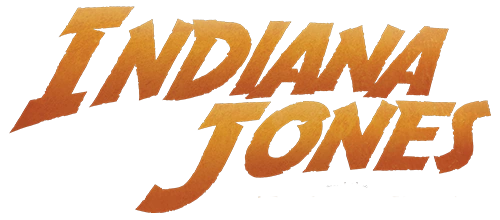m (→History) |
m (→History) |
||
| Line 7: | Line 7: | ||
Around October [[1913]], while staying in [[England]] with [[Henry Walton Jones, Senior|his father]], [[Indiana Jones]] was briefly displaced from his present and experienced the aftermath of the fall of [[Camlann|Camelot]] to the invading [[Angles|Anglo]]-[[Saxons]].<ref>''[[Young Indiana Jones and the Ghostly Riders]]''</ref> |
Around October [[1913]], while staying in [[England]] with [[Henry Walton Jones, Senior|his father]], [[Indiana Jones]] was briefly displaced from his present and experienced the aftermath of the fall of [[Camlann|Camelot]] to the invading [[Angles|Anglo]]-[[Saxons]].<ref>''[[Young Indiana Jones and the Ghostly Riders]]''</ref> |
||
| − | Two decades later, in [[1934]], after he had returned the [[Crystal Skull of Cozan|Crystal Skull]] of [[Cozan]] to [[Temple of the Serpent|its temple]] in [[British Honduras]], Jones struck his head while fleeing a giant [[anaconda]] then found himself perceiving the city back when it was inhabited. There, he witnessed the sacrifice of a slave girl by the native Cozanians in the Skull's presence. Jones found that he had little interaction with his surroundings so could not prevent the slave being stoned to death. Back in the ruins of the city, Jones noticed a rock at his feet which was covered in hair and |
+ | Two decades later, in [[1934]], after he had returned the [[Crystal Skull of Cozan|Crystal Skull]] of [[Cozan]] to [[Temple of the Serpent|its temple]] in [[British Honduras]], Jones struck his head while fleeing a giant [[anaconda]] then found himself perceiving the city back when it was inhabited. There, he witnessed the sacrifice of a slave girl by the native Cozanians in the Skull's presence. Jones found that he had little interaction with his surroundings so could not prevent the slave being stoned to death. Back in the ruins of the city, Jones noticed a rock at his feet which was covered in hair and fresh blood.<ref name="SotS">''[[Indiana Jones and the Secret of the Sphinx]]''</ref> |
He later sought out [[Albert Einstein|a fellow]] [[Princeton University]] [[professor]] for advice.<ref name="SotS" /> |
He later sought out [[Albert Einstein|a fellow]] [[Princeton University]] [[professor]] for advice.<ref name="SotS" /> |
||
Revision as of 17:55, 2 July 2020
- "I have had some unusual experiences, in which miracles seemed possible. Time travel, even."
- ―Indiana Jones[src]
Time travel is the concept of being able to move back into the past or forward into the future.
History
In an account attributed to Merlin, the wizard was able to travel through time with the powers of the Omphalos and Stonehenge.[1]
Around October 1913, while staying in England with his father, Indiana Jones was briefly displaced from his present and experienced the aftermath of the fall of Camelot to the invading Anglo-Saxons.[2]
Two decades later, in 1934, after he had returned the Crystal Skull of Cozan to its temple in British Honduras, Jones struck his head while fleeing a giant anaconda then found himself perceiving the city back when it was inhabited. There, he witnessed the sacrifice of a slave girl by the native Cozanians in the Skull's presence. Jones found that he had little interaction with his surroundings so could not prevent the slave being stoned to death. Back in the ruins of the city, Jones noticed a rock at his feet which was covered in hair and fresh blood.[3]
He later sought out a fellow Princeton University professor for advice.[3]
Behind the scenes
In an interview with The Indy Experience, Indiana Jones and the Secret of the Sphinx author Max McCoy revealed that he had intended to include time travel in a larger sequence for his novel but creatives pushed against the story mixing genres with science-fiction.[4]
Appearances
- Young Indiana Jones and the Ghostly Riders
- Indiana Jones and the Dance of the Giants
- Indiana Jones and the Secret of the Sphinx
